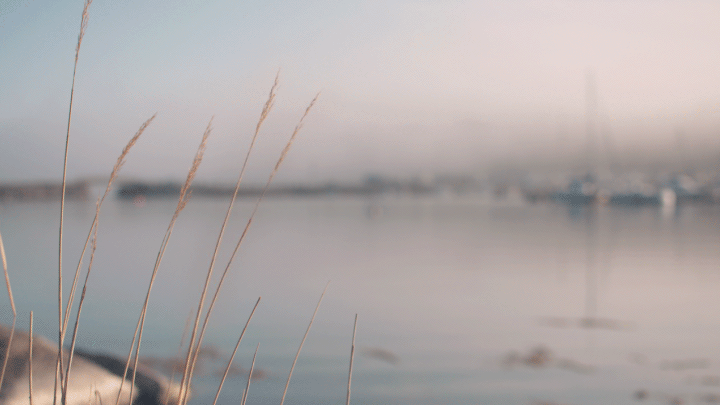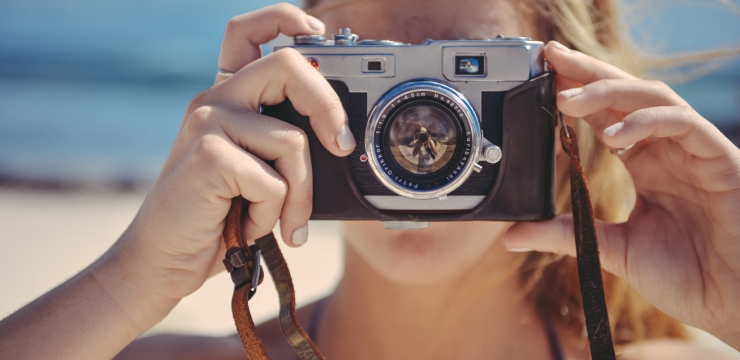Images on your site are the most eye-catching elements on your website. According to HubSpot, content containing relevant images earn up to 94% more page views than content that doesn’t include images. Just including images in your content can dramatically increase the likelihood that consumers will read your content. None of this should come as a surprise to you and we have something that will improve the likelihood of someone reading your content and sharing it even more: cinemagraphs.
What is a cinemagraph? Basically it is a hybrid animated GIF-style image and a still photo. Here is an example. You’ll notice that nothing is moving except for the reeds in the foreground:

Although cinemagraphs have existed for a few years (they were pioneered by US photographers Kevin Burg and Jamie Beck who started using cinemagraphs in 2011 for fashion and news photography), they have only recently started becoming more useful to advertisers and publishers because social platforms such as Twitter, Facebook and Instagram have enabled autoplay features for videos published on their sites. Even though cinemagraphs are, essentially, image files (GIFs, although they can be video files too), they behave similarly in-stream.
There are other benefits of cinemagraphs, one of which could even help address the twin user-experience and excessive page load pain points that are contributing to the raging ad blocker war. According to AdExchanger’s article titled “Video Advertising Gets Subtle”:
“The cool thing about [cinemagraphs] is that they’re typically made at a very high quality,” said Scott Messer, senior director of business development at Demand Media, which recently implemented cinemagraphs for its site in partnership with TripleLift.
…
One of the key benefits for publishers, according to Messer, is that the format is “fairly lightweight from an ad size perspective. You’re not running video and it’s not Flash.”
Producing cinemagraphs can be somewhat challenging relative to animated GIFs which you can create with a growing number of mobile apps. You can find a number of tutorials for creating cinemagraphs (this one from HubSpot explains how to do it in Photoshop) but it can take a little time to produce a professional-looking cinemagraph. On the other hand, advertisers and publishers, alike, can create stunning visuals using high quality imagery that really stand out.
Source: Flixel Gallery, by Eirin64
Publishers and advertisers are already seeing impressive results from shifts to this more dynamic medium. Again, speaking to AdExchanger –
Messer said Demand Media data shows a 25% lift in user engagement with the cinemagraph format compared to static images – which trades in the same standardized inventory and at the same rate.
What interests me, especially, is the potential for in-image ads used in conjunction with this more effective image format. In-image ads offer publishers more effective alternatives to traditional banner ads. The iab highlighted encouraging viewability trends in in-image ads in its In-Image Advertising Primer, including:
In-image advertising is also more viewable than standard display units. According to MRC-accredited technology leader DoubleVerify, the more than two dozen in-image campaigns it measured had an average viewability of 77 percent, which is 51 percent higher than its viewability benchmarks for traditional display advertising networks.
Simply adding in-image ads to cinemagraphs, alone, probably won’t dramatically increase your engagement with your audiences. It is important to be mindful of how the ad units appear over the dynamic images and ensure that the ad units enhance the overall experience, not detract from it. This means using better designed and carefully selected ad units along with appropriate ad content in the ad units when you combine in in-image ads with cinemagraphs.
Cinemagraphs are a striking advertising medium that leans closer to native advertising than banner ads and, when coupled with in-image ads, can be powerful marketing tools for innovative publishers.
Image credit: Blond Girl Taking Photo With Retro Camera In The Sun from Stokpic, licensed for personal and commercial use, no attribution required.

